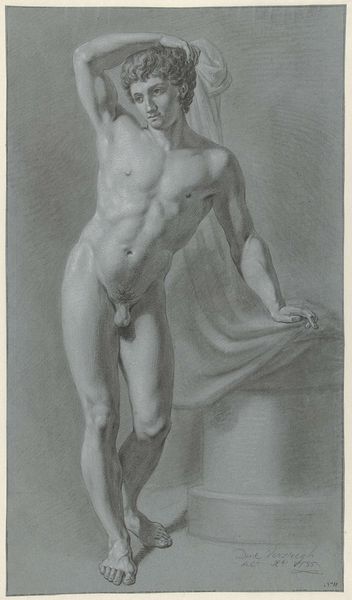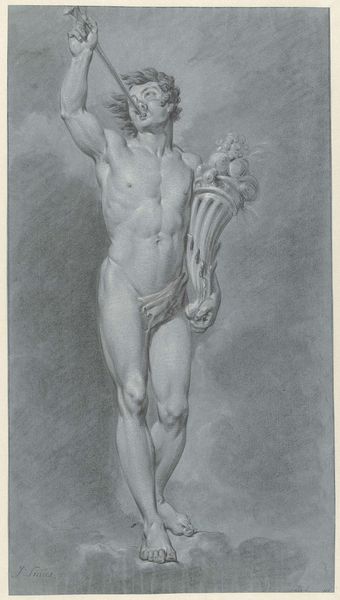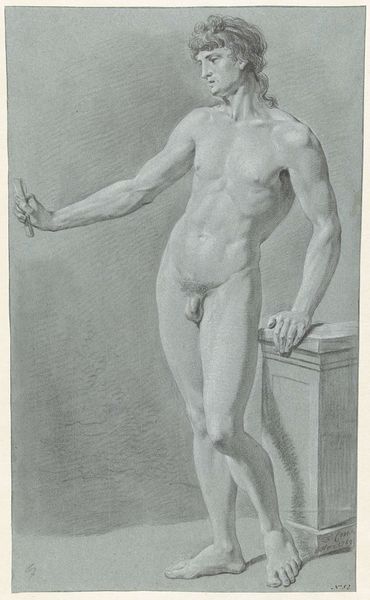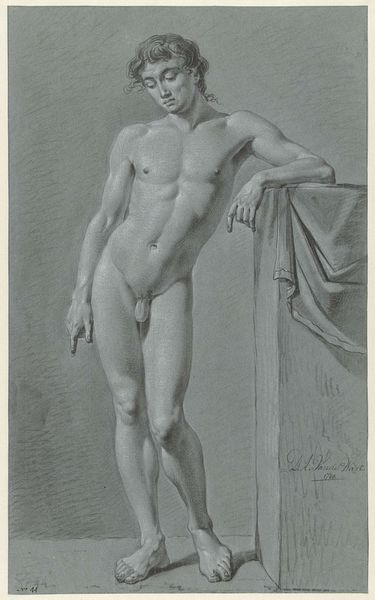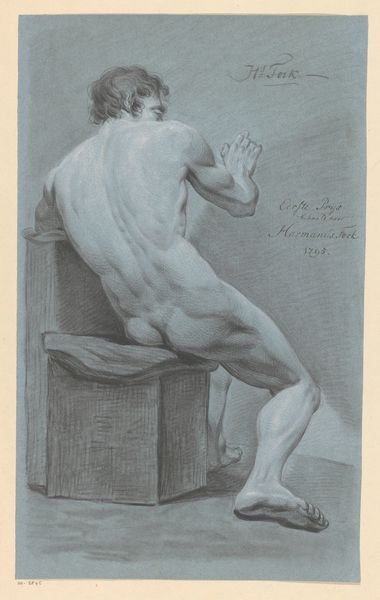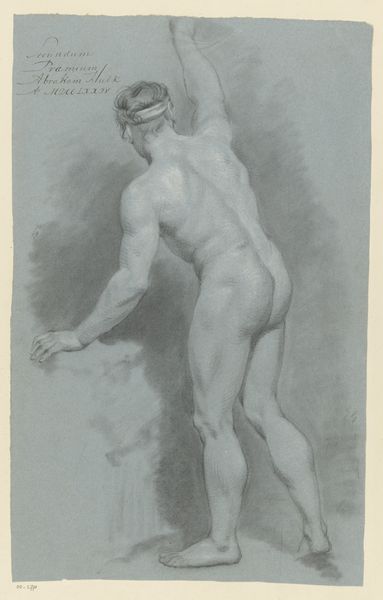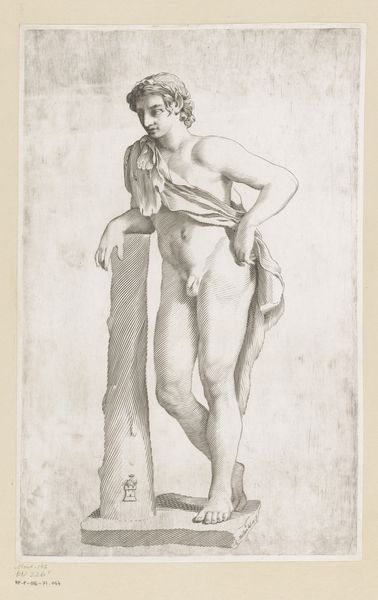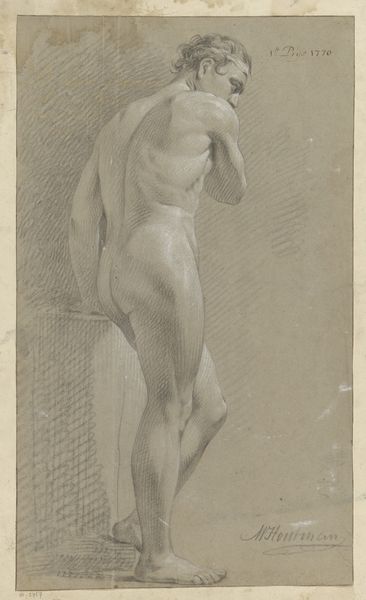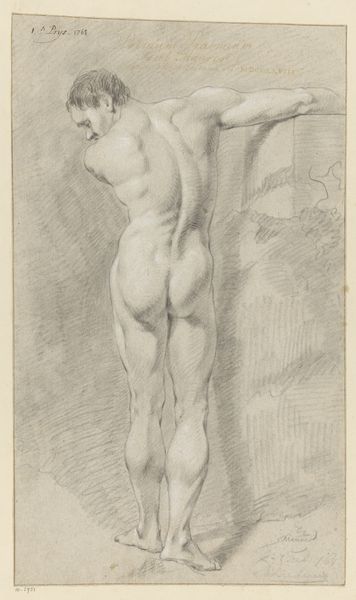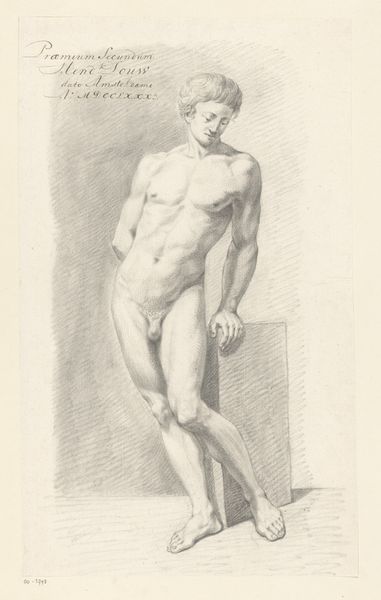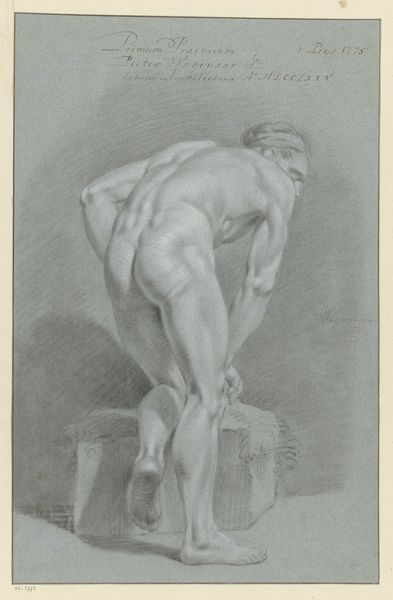
drawing, pencil, charcoal
#
portrait
#
drawing
#
facial expression drawing
#
pencil sketch
#
charcoal drawing
#
charcoal art
#
portrait reference
#
pencil drawing
#
pencil
#
animal drawing portrait
#
portrait drawing
#
charcoal
#
academic-art
#
nude
#
portrait art
#
fine art portrait
Dimensions: height 545 mm, width 373 mm
Copyright: Rijks Museum: Open Domain
Editor: Here we have "Standing Male Nude, Front View," a drawing from around 1827 by A. Waterloo. The charcoal and pencil create a striking image – I’m really drawn to the contrast and the figure’s confident pose. What jumps out at you? Curator: Well, it’s funny you say 'confident.' To me, there's almost a wistful quality, a yearning. Look at the way he leans, as if needing support, his gaze averted as though contemplating something just beyond our view. Makes you wonder what that "something" is. Waterloo invites us into a moment of quiet reflection, wouldn't you say? The drape adds a layer of mystery, suggesting both vulnerability and a touch of the theatrical. It feels as though he is in thought, doesn't it? Editor: That's interesting! I hadn't considered that. So, the drape isn't just stylistic, but adds a level of contemplation. Curator: Precisely! It’s all those lines and angles combined, and how they pull at us. And consider the context: the pursuit of anatomical accuracy, the academic ideal. This isn’t just about replicating a form; it’s about conveying emotion, an inner life. Editor: It does make me look at it differently. The contrast between the detailed rendering of the body and the almost vague background now adds to the introspection. Curator: Right? It's like the world around him fades away, leaving only the figure and his thoughts. Perhaps it’s less about seeing and more about feeling. What do *you* feel looking at it now? Editor: I think I am beginning to sense the weight of thought in what I had considered merely confidence, but that adds new layers of appreciation for the work. Curator: See? Art, at its best, does exactly that: pulls you in and leaves you richer for the experience.
Comments
No comments
Be the first to comment and join the conversation on the ultimate creative platform.

